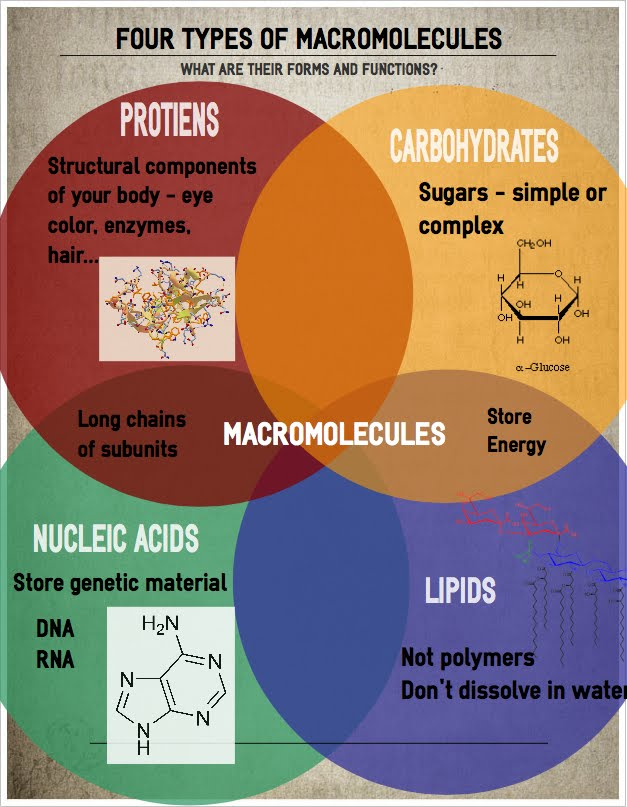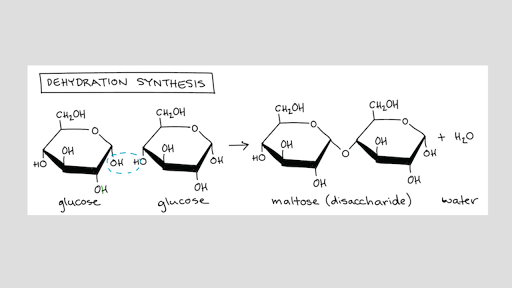The energy stored in each of these macromolecules varies because their chemical structures and therefore their energy-storing bonds differ. Why do macromolecules differ in the amount of energy they contain.

Properties Of Biological Macromolecules Study Guide Inspirit
They regenerate it from AD.

. This arises because there are more electrons surrounding each carbon atom in fat. Why Do Cells Contain Only A Small Amount Of AtpCells contain a small amount of ATP at all times because this molecule is what gives the cell the energy it needs to functionDo cells only have a small amount of ATPCells contain only a small amount of ATP at any one time. Since carbohydrates and proteins can provide the same amount of energy to the body they must have something in common in their structures.
The most rich of these is generally lipids more specifically triglycerides. They do not act as energy storage molecules and are typically used quickly. So the more high energy bonds in a given molecule generally the higher the energy yield.
By Kevin Beck. Answer 1 of 4. Dehydration and hydrolysis reactions are similar for all macromolecules but each monomer and polymer reaction is specific to its class.
Different macromolecules contain different numbers and types of bonds. 3 What can you say about the change in free energy of the cleavage of sucrose into glucose and fructose. Why do macromolecules differ in the amount of energy they contain.
The amount of energy released by forming these H-O and CO bonds exceeds the amount of energy it takes to break the C-H and C-C bonds. When a high energy bond is broken the cell can store that energy in an intermediate like ATP and use it at a later time. 2 Answers this is because different macromolecules have different bonds to them and as such yield different amounts of energy.
Some contain more high energy bonds than others. They are built from smaller organic molecules and are classified into four major classes including carbohydrates proteins lipids and nucleic acids found in our DNA and RNA. When a hydrocarbon fuel combusts the C-H and C-C bonds are broken and H-O and CO bonds are formed instead.
They are required for energy structure DNA enzymes etc. You also know that properties like amount of energy are determined by the type number and arrangement of atoms in a substance. They are large molecules hence the term macromolecules necessary for life.
Write the overall reaction for cellular respiration - The process that releases energy from food in the presence of oxygen. Fats contain more energy than carbohydrates because they need more oxygen for each carbon atom which in turn produces more energy. 4 What can you say about the relationship between the reactants and the products in.
Carbohydrates or polysaccharides lipids proteins and nucleic acids. What is the overall reaction for Cellular respiration. While fat has a negative reputation it is an important component of each persons diet and intake should vary according.
The energy stored in macromolecules varies because their chemical structures and their energy-storing bonds differ. The more carbon and hydrogen atoms. Proteins and fats are macromolecules.
Dehydration reactions typically require an investment of energy for new bond formation while hydrolysis reactions. 2 What is the purpose of storage macromolecules such as fats in our bodies. These are often categorized into four basic types.
Such molecules can be termed as carbohydrates proteins lipids fats and nucleic acids. The energy stored in each of these macromolecules varies because their chemical structures and therefore their energy-storing bonds differ. Biology or informally life itself is characterized by elegant macromolecules that have evolved over hundreds of millions of years to serve a range of critical functions.
Why do macromolecules differ in the amount of energy they contain. Why do macromolecules differ in the amount of energy they contain - Their chemical structures. Fats must have a structure that is different because they provide the body with.
Carbohydrates are the primary source of energy starch and glycogen and ribose for our body. 1 Why Do We Have Storage Macromolecules Such As Fats In Our Bodies.

Ch 3 Biological Macromolecules Flashcards Quizlet

0 Comments